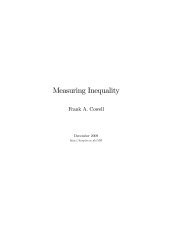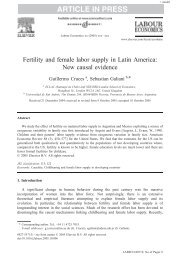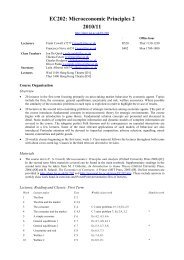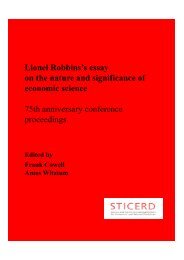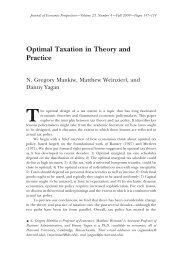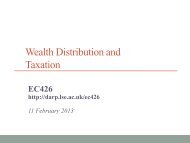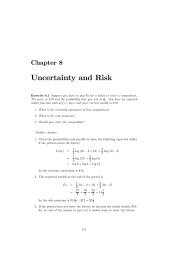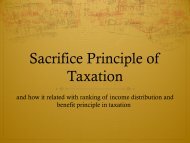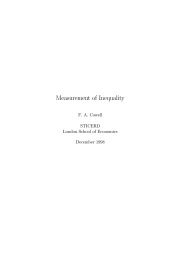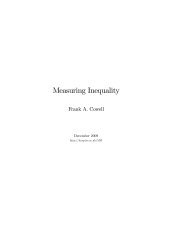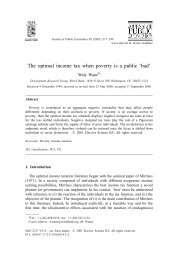Bayer, R.- C. and F. A. Cowell - DARP
Bayer, R.- C. and F. A. Cowell - DARP
Bayer, R.- C. and F. A. Cowell - DARP
You also want an ePaper? Increase the reach of your titles
YUMPU automatically turns print PDFs into web optimized ePapers that Google loves.
allows substituting C 0 from (7) into (8). Applying (9) <strong>and</strong> using (4) gives asimpli…ed …rst-order condition for the optimal output choice:nXj6=i@ i (d (q)) @d j (q)[@d j @q i i ] + 1 t + @ i (d) @i (q)[i @d i i ] = 0:i @q i(10)The set of conditions (10), one for each …rm, characterises the equilibrium.Using this characterisation of equilibrium we can now present the mainresults in three steps: sections 4 to 6.4 Compliance decisionsIn this section we compare the di¤erent e¤ects that …xed <strong>and</strong> relative auditrules have on the extent of tax evasion. If the declaration stage has aninterior solution then, under weak conditions, a relative audit rule leads toless tax evasion than a comparable …xed audit rule. 12The intuition for the result appears simple: in addition to the typicalincentives provided by a …xed detection probability <strong>and</strong> the corresponding…ne, a relative audit rule provides a further incentive to increase the declaration,as this decreases the detection probability. If one replaces the relativeaudit rule in (5) with a …xed audit rule the …rst-order condition becomest 0 i [f + t] = C 0 i( i (q) d i ): (11)To compare the rules (7) <strong>and</strong> (11) we need a criterion that makes the two regimescomparable. Suppose we require the equilibrium detection probabilityin the relative-rule scenario to be equal to the …xed-detection probability.This ensures that the audit costs incurred by the authority are equal underboth regimes. Setting i (d 0 ) = 0 i <strong>and</strong> keeping the pro…ts the same in bothcases it is clear that (7) <strong>and</strong> (11) di¤er only by the “shading”term@ i (d)@d i[ i i ]:This is just the additional incentive to increase the declaration in order toreduce the detection probability <strong>and</strong> leads to higher declarations under arelative audit rule.However, this intuitive argument neglects the dependence of …rm’s decisionupon the decisions of the others under a relative audit rule. More is12 The result is also valid if …rms compete in prices rather than quantities.11



